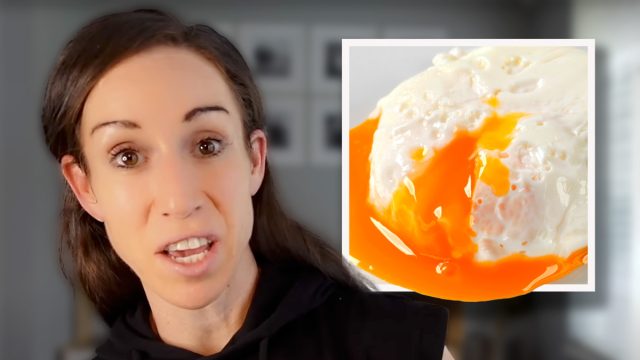Top 10 High Protein Foods to Burn Fat You Should Be Eating Every Day, According to a Kinesiologist
Do you want to amp up your protein intake? Michelle Roots (@MichelleRoots) is a Kinesiologist, Certified Strength & Conditioning Coach, and Certified Nutrition Coach With Over 15 years of Experience in the fitness industry. In one of her viral videos, she breaks down the best high-protein foods you should be eating on a daily and weekly basis to lose weight. "You should be getting about 0.7 to one gram of protein per pound of body weight, " she says. "A lot of the clients that I work with who are on a weight loss journey are often cutting their calories too low or not actually getting enough protein to fuel their body, build lean muscle, and burn body fat. Incorporating the foods that I talk about in this video will really help you on your weight loss journey."
Lean Chicken Breast
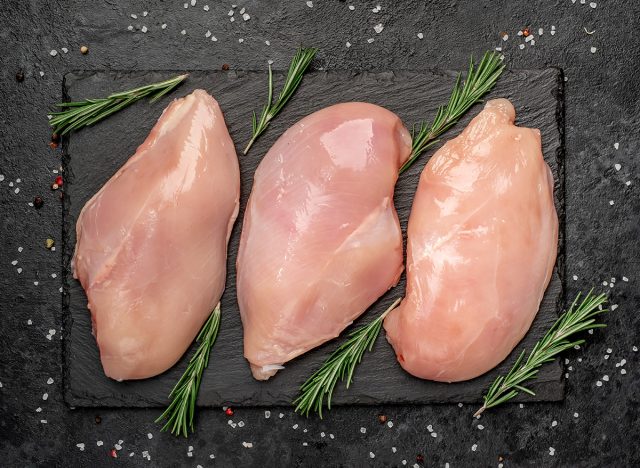
High protein food number one is a lean chicken breast, a "go-to" for her. "You can add it to anything," she says. "I'm always just throwing chicken breasts in the air fryer. The kids love it as a snack, but it's a great source of protein. Looking at about 17 or 18 grams of protein per hundred grams and very low calorie."
Lean Ground Turkey
The second high-protein food is lean ground turkey. "Another go-to in this household is to throw into pasta meals, to make into burger patties, or to stir fry or make tacos," she says. "There are so many things you can do with it, and it's a great source of protein. Again, similar to chicken, about a hundred grams, you're getting close to 20 grams of protein, and again, very low calorie to keep you in your calorie deficit."
Eggs
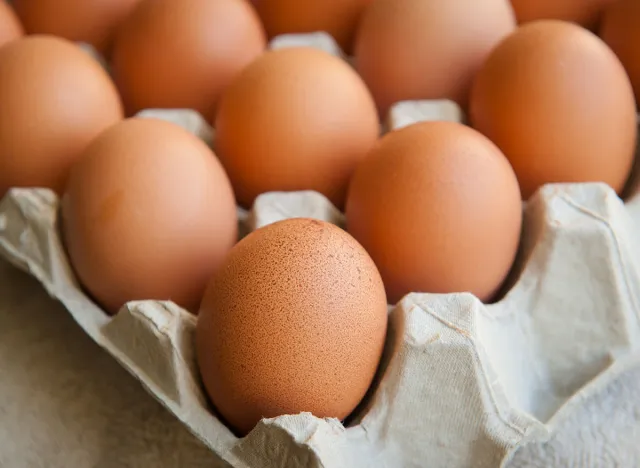
Number three, eggs. "You can make them anywhere, anytime, hard-boiled, scrambled, sunny side up, or whatever you want, but they are a great source of protein as well. One large egg has about six and a half, seven grams of protein, and again, only about 72 calories per egg," she says, adding that egg whites are "another amazing source of protein and super easy to throw into anything. Often, when I'm making an omelet, I'm using one or two whole eggs, and then I add extra egg whites just to increase the protein of that entire meal. One large egg white is about three and a half grams of protein and only 17 calories, so again, low calorie to keep you in that calorie deficit, but you're still getting your protein intake."
Salmon
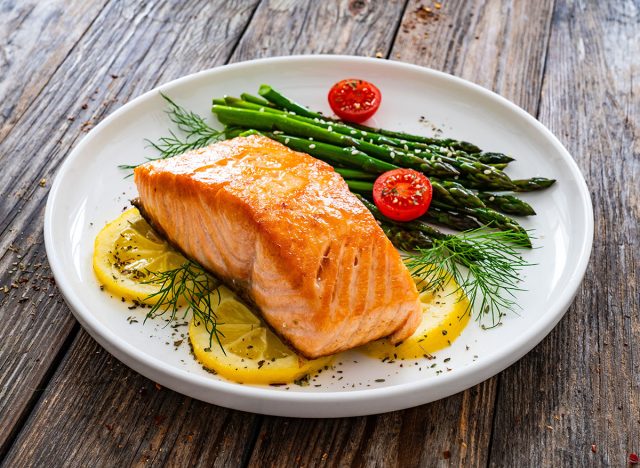
High protein food number four, salmon. "Amongst all the other amazing health benefits that I won't even get into in this video because we're focusing on protein. Salmon is an amazing low-calorie source of protein as well. Approximately around 100 grams, you're looking at about 17 or 18 grams of protein and only about a hundred calories," she reveals.
Lentils

High protein food, number five, lentils. "Lentils are a little bit higher in carb than the other lean proteins that I've been talking about already, but that doesn't mean they're bad. Carbs are okay," she says. "Healthy balance is okay, and lentils are an amazing source of protein, especially if you're someone who doesn't eat meat. In one cup of lentils, you're going to get about 18 grams of protein. Only about 230 calories, again, makes for a great protein source.
Plain Greek Yogurt
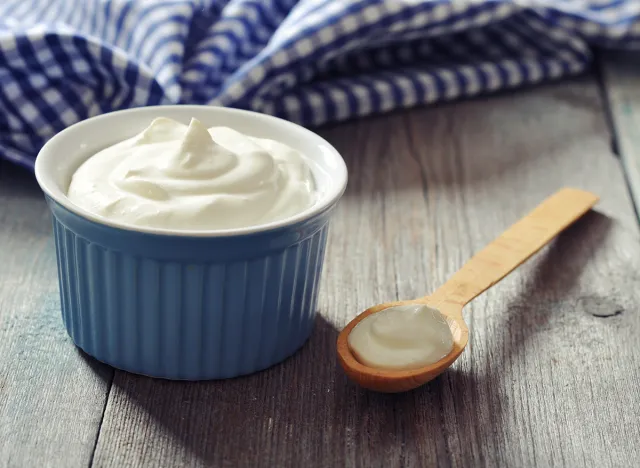
Number six is plain Greek yogurt. "This has been one of my go-to's for a really long time. I love the taste, I love what it does for my body, and I love that it's high in protein," she says. "In Greek yogurt, you're looking at about 150 grams. Serving is going to give you 15 grams of protein and only 80 calories. So if you're eating two servings, you're still only at 160 calories, but 30 grams of protein."
RELATED: 10 Protein Rules for Shedding Pounds Every Day
Cottage Cheese
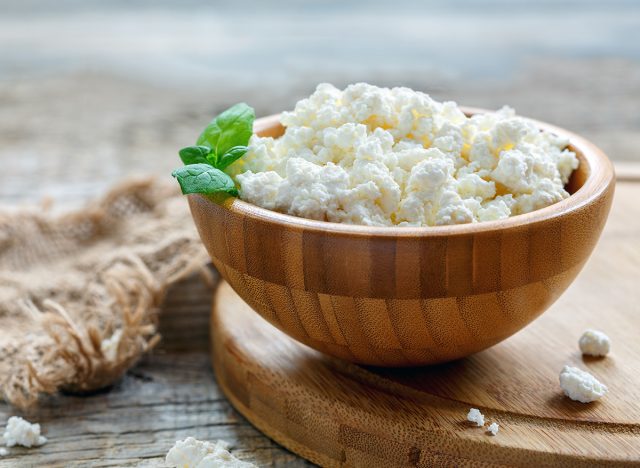
Next up, cottage cheese, "another great low calorie, but high protein food," she says. "For about half a cup of cottage cheese, you're getting about 12 grams of protein and only 80 calories." Two servings will give you 24 grams of protein and 160 calories only. "This will help keep you full, keep you fueled, and again, get those protein levels up," she says.
Amai
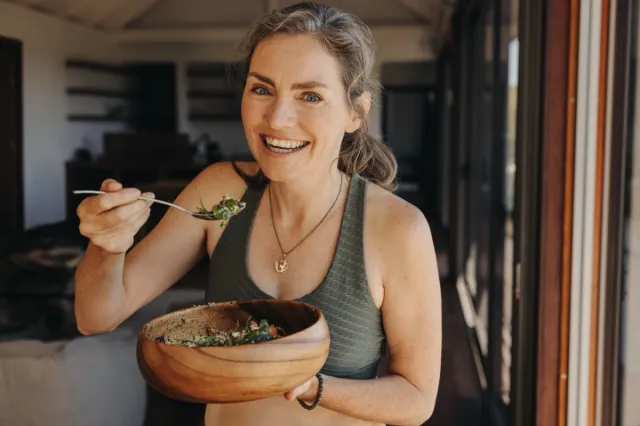
Her eighth pick? Amai, "Especially again, if you're a vegetarian, this is a great source of protein, but even if you eat meat, these are great to have on hand as quick snacks, throw into salads, throw into stir fries," she says. "To increase the protein intake, half a cup of Amai is 12 grams of protein and only about 150 calories."
Canned Tuna
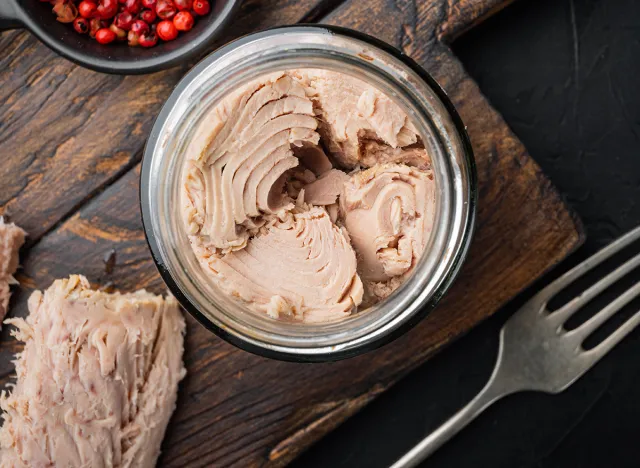
High protein food number nine, canned tuna. "Super easy to throw into any meal. It doesn't even have to be cooked. And for one can of tuna, you're looking at 30 grams of protein and only 120 calories," she says.
RELATED: I'm 60, and These Are 25 Anti-Aging Habits I Wish I Started Doing Sooner
Whey Protein Powder
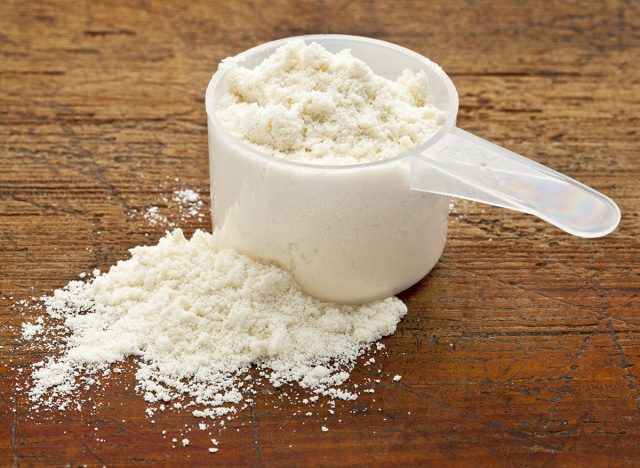
The last food on her list? Whey protein powder. "I know this is not like a food that I can recommend, but it is a source that helps me increase my protein intake, helps me with recovery from my workouts, and helps me as a healthy snack in between meals to curb cravings and keep my body fuels," she says. So, I definitely think having a whey protein powder on this list is very important. Now, when I say protein powder, I use whey isolate protein powder, but of course, a vegan protein powder. If you are someone who can't have whey, that is totally fine as well. One serving of whey protein, you're looking at about 150 calories, but 35 grams of protein." And if you enjoyed this article, take advantage of these 15 Quick Ways to Lose Body Fat Percentage in a Week.
